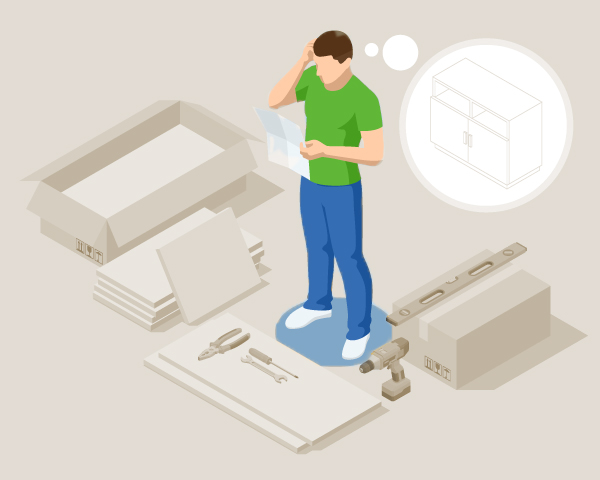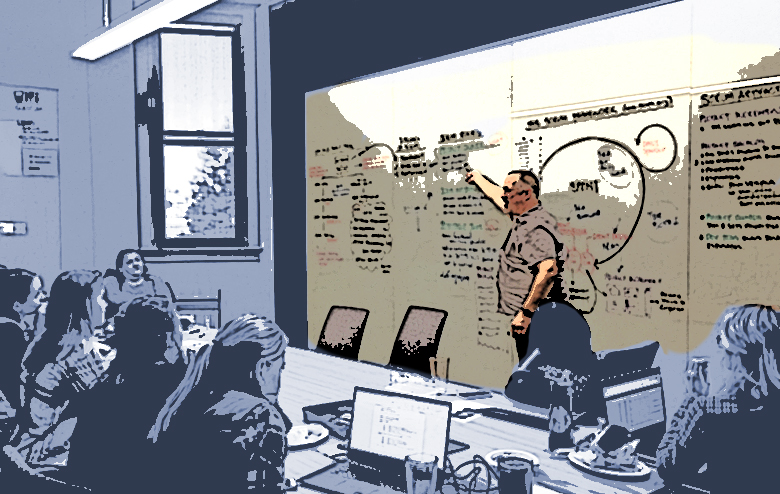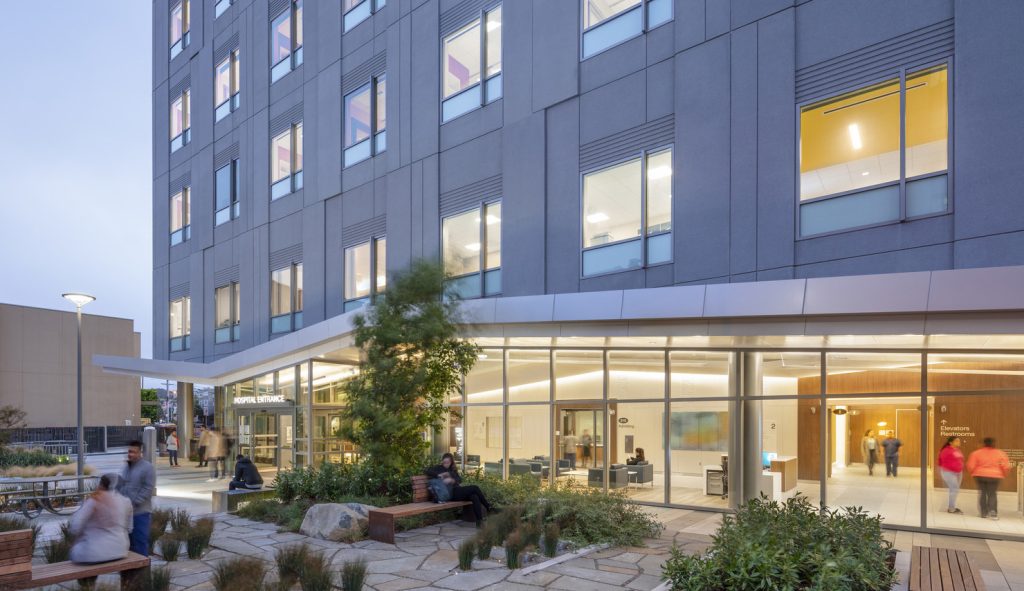 If you are like most people, you’ve bought flat-pack furniture from IKEA at some point in your life. You return home, unpack the pieces and start wondering how on earth it is all going to come together. Luckily, IKEA gives you a picture of the final piece that comes with step-by-step instructions.
If you are like most people, you’ve bought flat-pack furniture from IKEA at some point in your life. You return home, unpack the pieces and start wondering how on earth it is all going to come together. Luckily, IKEA gives you a picture of the final piece that comes with step-by-step instructions.
Now imagine for a second that there was no picture and no booklet, and that your job was to assemble the piece without the instructions while simultaneously creating the instructions for how to do it.
Sounds crazy, right?
But that is exactly what a lot of designers deal with when they have to document their thought process while developing a design. In other words, to describe how to do something when they don’t know what that thing is or only have a partial picture of what it is.
Pull planning in design
Like I said, crazy. Which leads me to pull planning in design. The biggest challenge we face in planning the flow of information and decisions relates to properly defining the end product. Teams find it very difficult to plan how to do something while simultaneously defining what that something is. In the design development phase, for example, architects and designers will think about different aspects of a work in progress because they are drawing it or imagining it in their head. Often, they are not trained to break down their work in the same manner as a builder would do. A builder, on the other hand, can’t hang a door unless the wall is already there.
In other words, there’s a sequence to construction by nature that doesn’t have to exist in all parts of design. While the builder typically prices all aspects of their work based on the procurement of materials and the corresponding labor required for installation, design work is rarely understood in such discrete increments. That’s why many designers struggle to describe their work and place it in a proper sequence. As a result, there’s a lack of complete understanding as to when information should flow to or when it is required from others to advance the project seamlessly.
As part of the Last Planner methodology, which seeks to unify project planning across multiple design and construction disciplines, pull planning is a method of making and securing reliable commitments through planning, re-planning, status activity, and measuring results in relation to a project milestone.
While a construction pull plan focuses on planning for the flow and installation of materials, pull planning in design centers around the flow of information and decisions, implying a need for a solution customized to the design mindset.
How can we make design pull planning more efficient?
Conditions of Satisfaction and Standards of Completion
To make design pull planning more efficient, I have added two steps to the pull planning process. First, I lead a brief session where we define Conditions of Satisfaction (CoS) that clearly describe what the milestone of a particular phase is. The Conditions of Satisfaction include the expectations of the owner and are both quantitative and qualitative. Then I lead the team through an exercise to define the Standards of Completion by answering the question: “What will I provide and what does it look like?“
This process proceeds discipline by discipline, allowing each stakeholder to describe in detail what they will provide as part of the package to fulfill the CoS. Only after this step is complete do we begin to plan how to execute the Conditions of Satisfaction and Standards of Completion.
Three strategic steps that will make your design pull plan a success:
I first discovered Lean IPD and pull planning in a pilot project for a client who wanted to improve outcomes across multiple projects, and I was instantly sold on the concept. At its root, a pull plan is the first attempt by a project team to define how they will deliver work together. It can be a highly creative process and a wonderful way to foster communication, collaboration, and respect among all involved parties. Plus, it’s a scalable system, which works for projects of any size from a half-a-billion-dollar hospital to a residential renovation. The principles, the ideas, and the methodologies stay the same.
Incorporate the following three elements to make your design pull plan a success:
- A robust, dynamic, creative planning session with all involved stakeholders
- A spreadsheet to document commitments
- Software with built-in scheduling logic capability
Set people up for success
Before your pull planning session, it is vital to talk to the project leaders to understand the project constraints and all-important milestones as well as identifying all stakeholders. I also provide standard reading materials to give people a grounding in print practice. Additionally, I challenge stakeholders to think about the work they will deliver and ask them to recall a similar project and to arrive at the pull session with a clear understanding of what their firm (staffing, deliverables) will take to complete their work. As expected, the more people invest in the pre-learning, the more effective the planning session will be.
Get the most out of the session
Let’s face it, we are all human, a lot of people feel uncomfortable being called into a group of strangers to work in a creative scenario, as one of our biggest fears is failing in front of others.
So, start with an ice breaker, a fun question, such as: what was the first concert you attended, what is your favorite jam, or who is the one person you would love to meet in your lifetime. Then ask all participants to introduce themselves and share their role in the project. Don’t ask what company they work for!
Next, I endeavor to build a sense of purpose through a brief historical overview of Lean IPD, so that people understand what they are part of. In terms of spirit, I invite all stakeholders to think about their best past experiences and challenge them to consider how they can recreate such an experience. Lastly, it is helpful to create an appealing space that makes people feel good and encourages communication and collaboration. In other words, you should have tables where people can sit and write paired with open space in front of a blank wall for milling about.
The power of color and sticky notes
Material-wise, I recommend using a laminated grid on plotter paper or a large rectangular sheet of paper as the background for your pull plan, as well as the usual multi-colored sticky notes, pens and markers. The sticky notes play an essential part in this creative planning scenario, as each company will get their own color.
Next, I divide each sticky note into three equal rows with the top one split in half again. For each task, the sticky note contains the following information:
During the session, the stakeholders will write sticky notes for their tasks. As soon as they make a request, the next person, who has to provide that particular item to the person who requested it, writes a new sticky note with the things they need to fulfill their job. Not all stickies will have requests. Sometimes, a person can simply provide what someone else needs without needing anything. Every request should spur a sticky representing a commitment to get that person what they need to complete their work.
Remember that these are always ”finish” tasks, which means that it is important to place the stickies on the day that the work completes. For example, I have a task that takes three days to complete, and I want to complete it on a Friday. Everything I need from another stakeholder to finish my job on Friday needs to be delivered to me on Tuesday. As a result, each person can finish their task in the allocated time frame. In other words, the way to finish on time is to start on time with all the things you need to complete the job successfully.
Conclusion
If you follow this system, the plan including the scheduling logic for the project phase builds itself. We start with the ultimate deliverable and work backwards. Hence the name pull planning.
Going back to IKEA, we now have the picture of the final product and work on the step-by-step instructions how to assemble it. And, first and foremost, this process requires patience, patience, and more patience.
Rome wasn’t built in a day either!
(This article also appears on LeanIPD.com)



